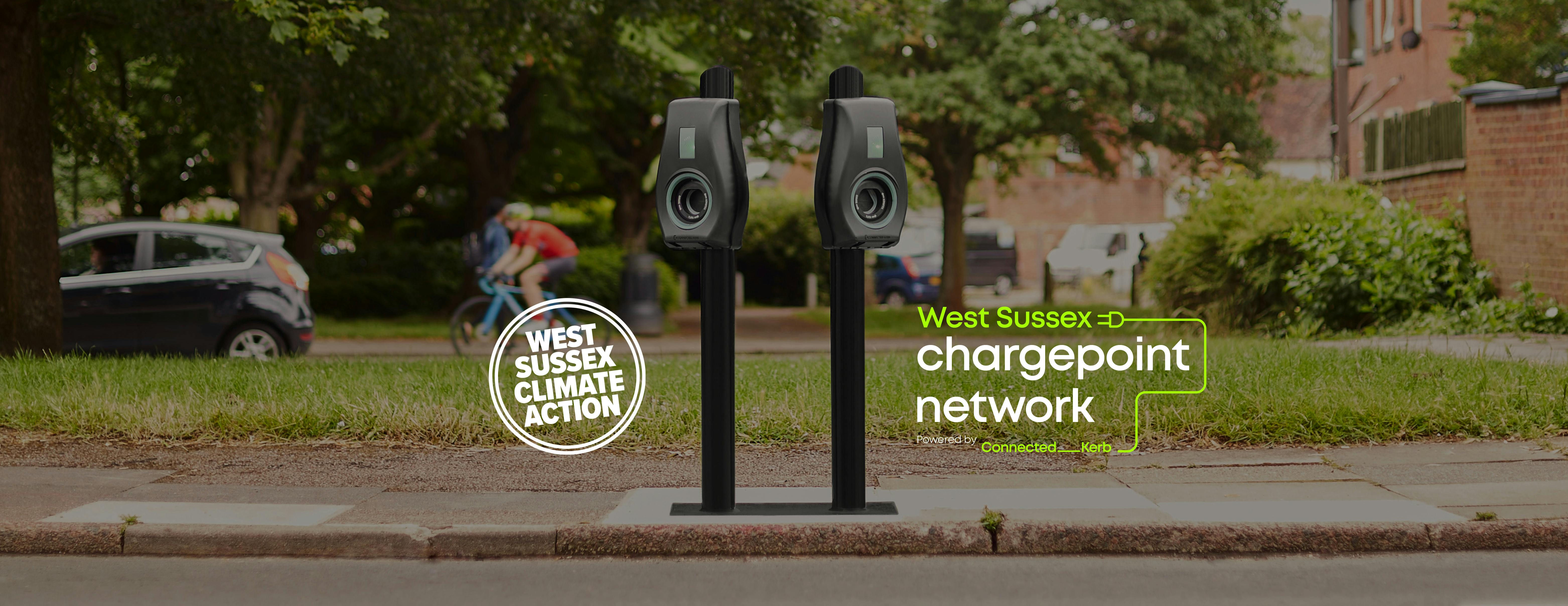FAQs
What is the West Sussex chargepoint network?
West Sussex County Council along with its district and borough partners in Adur, Arun, Chichester, Crawley, Horsham, Mid-Sussex and Worthing are working together to provide a network of publicly available electric vehicle (EV) chargepoints both on-street and in district & borough car parks.
How have chargepoint locations been chosen?
The proposed locations above have been selected because either a member of the public has requested one in the area, or it has been identified that there is a need as there is little or no residential access to off-road parking and a lack of nearby public chargepoints.
Why do we need a public charging network?
In 2035, the UK government is banning the sale of new petrol and diesel vehicles to support the move to more environmentally friendly options and reduce our reliance on fossil fuels. Around 40% of drivers are without off-road parking therefore a network of public chargepoints is required so people without driveways can charge their EVs easily and conveniently.
More and more people are choosing electric vehicles, driven by shifting consumer preferences, technological advances, and a stronger push for sustainability.
The government is working towards phasing out the sale of petrol and diesel vehicles, highlighting the need to expand charging facilities and provide accessible chargepoints to those without off-road parking.
I don’t have an EV, will I still be able to park my car?
We’re not proposing to change any of the parking arrangements at the moment, so other cars will still be able to park as before, although we hope people will be considerate & allow EV drivers to charge. Any future change to parking restrictions would go through the normal consultation process.
Why switch to an electric vehicle?
EVs boast lower running and maintenance costs as well as reduced emissions, which means clearer air for everyone. With a growing second-hand market, increasing car leasing options, and vehicle tax exemptions, EVs are becoming more affordable for more people.
What will the chargepoints look like?
The discreet ‘Gecko’ 7kW chargepoints have been designed to be small and unobtrusive.
Each chargepoint has two sockets, to allow two EVs to charge at the same time. There will also be a ‘feeder pillar’, to house the electrics, like other electrical boxes you see on pavements.
This will allow us to future-proof our network by easily installing more chargepoints to meet increasing demand as more people move towards electric vehicles in the coming years.
Who is funding the installation and maintenance of the chargepoints?
The contract with Connected Kerb is a concession contract, meaning that West Sussex County Council and its district and borough partners are not required to contribute any funding towards this project. The project is also supported by the Office for Zero Emission Vehicles (OZEV) funding as and when available.
How do I find the locations of other chargepoints?
Download the Connected Kerb app via the Appstore or Google Play or visit zap-map (opens in new window)
What are the chargepoint tariffs?
Please refer to the charges on the Connected Kerb (opens in new window) page.
Where does the electricity come from?
Renewable energy sources primarily from wind, solar and hydro (water) sources will power 100% green electricity supplied by Octopus Energy.

